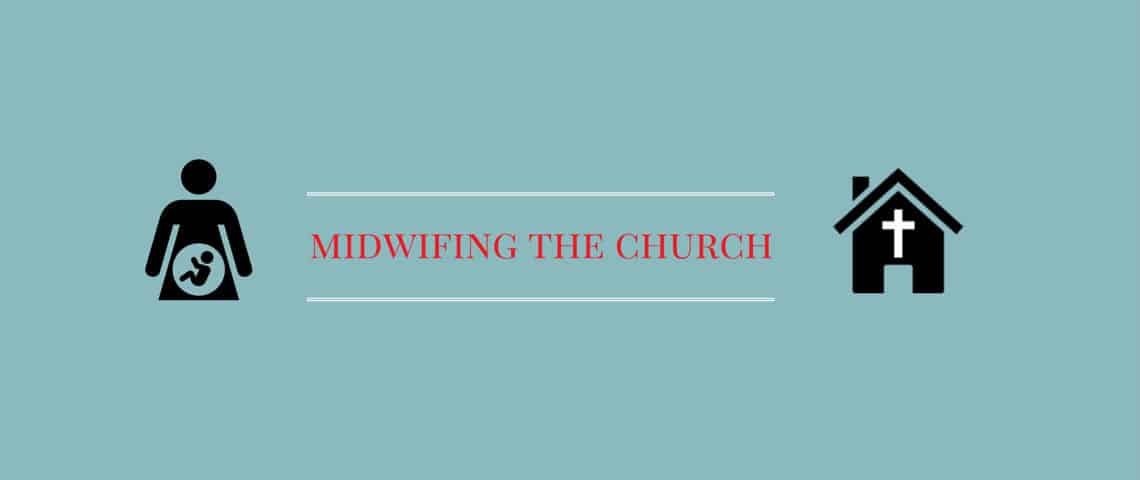As a leadership challenge a friend recently said,
“Chris, you’re at war. You’ve got your band of brothers and you have to know your plan of attack, give your commands and lead your people forward.”
I was honestly left with more dissonance than clarity as I sought to translate his words into my everyday paradigm. The metaphor of war tactics did not at all connect with my particular context or my calling and especially not with my experience as a woman.
I’ve found that metaphors for leadership and church planting over the last few decades have arisen dominantly out of male narratives.
Much of church planting training, coaching and methodology is front-loaded with language developed by what is traditionally the experience of men, often neglecting the common experience of women. This reality narrows our vision for the church and paralyzes our full participation with God’s hopes for all of humankind.
One of my favorite metaphors to ignite our imagination and widen our paradigm for the birthing of new local expressions of church is that of the midwife in the birth of a child.
After the birth of my second daughter, I would frequently introduce my friend and Midwife Janna as, “my midwife who delivered my baby.” To which Janna would respond, “I didn’t deliver anything. It was your delivery of your baby and I just got to assist in the miracle.”
In Isaiah 66:9 we see God portrayed as the one who gives birth, specifically to the newborn nation of Israel. “’Do I bring to the moment of birth and not give delivery?’ says the LORD. ‘Do I close up the womb when I bring to delivery?’ says your God” (see also Psalm 71: 5-6 & 22:9-10).
God is birthing the church and just as the midwife comes alongside a laboring mother, so are we invited to come alongside God in the miracle of new life.
5 Postures to Midwifing Local Expressions of the Church
Here are a few things we can to learn to embody as we enter God’s story of birthing local expressions of the church.
1. Ready your heart and leave your agenda behind
As a midwife is acutely aware that her own worldview and biases can and will impact the way in which she enters a birthing experience, so we learn to become aware of what we bring and what we need to leave behind.
As she steps into a context for birth, the midwife commits to regularly centering herself and leaving all agendas, preconceived notions, opinions, prejudice and expectations at the door. She goes into the birth with an open heart and with open arms, ready to receive whatever may come.
Among other things, we carry our stories, our cultural upbringing and our past church experiences with us as we join God’s restorative work in the world. We must accept and surrender what we know, taking the posture of a learner and entrusting the unknown process to God.
2. Adapt to every unique story
As a midwife adapts to change in any particular birth story, so we follow the impulses of the Spirit, embracing the unexpected and anticipating the uncommon.
Each birth story is unique. The role of the midwife is to usher a mother and child into their particular experience with sensitivity and strength. This process requires adaptation at every turn of the plot. Things will never go as planned. A midwife learns to see deviation as a part of the mystery unfolding.
In the process of birthing new communities, churches, and transformative structures, some of the greatest setbacks or perceived failures can be the essential ingredient for something profoundly mysterious and beautiful to come into being.
3. Open the space for new life to be birthed
As a midwife opens the space for new life, so we are called to open the space in our neighborhoods, towns and cities for redemptive realities to be birthed.
Nurturing an environment conducive to birth is a key role of the midwife. She looks at a space to determine its assets and its liabilities. She creates an inviting setting of welcome and nurture, protecting the space and pushing back potential barriers, be that physical, systemic, spiritual or relational. A midwife guards an environment from anything that may hinder the birthing process.
Our contexts are both fertile for birth and vulnerable to that which steals life. We are called to nurture and protect the life that God is forming in our place.
4. Trust that the Holy Spirit is gestating
As a midwife lives with abounding wonder at the process of new life, so we also live with wonder, anticipating the new and restorative things that the Holy Spirit is generating.
Faith and imagination are sustaining attributes of the midwife. The miracle of birth never loses its radiance. With faith and imagination we follow the Holy Spirit in the everyday work of birthing transformative structures and communities of faith.
5. Co-labor in the Spirit
The word “midwife” means “with women.” It is a role of accompaniment, support, and companionship. Just as the midwife comes alongside a birthing mother, so the Holy Spirit is inviting us to join in on what she is birthing in our world.
The Holy Spirit is gestating and God invites us as partners and co-laborers to faithfully enact our specific gifts to birth magnificent things in the world.
As we explore fresh metaphors I pray our vision enlarges and our passion enlivens so we can join in on what God is birthing all around us.





16 responses to “Midwifing the Church”
In Margaret Guenther’s book HOLY LISTENING, she has a whole chapter on spiritual midwifery. You’d love it!
That you’re-at-war metaphor for church planting is uncomfortable for another reason, and would be even if women were a higher percentage of each of the U.S. military’s branches than they actually are.
If planting a church is like going to war, then whom is it like going to war against? Unless the person using the metaphor clarifies that it’s against Satan or against poverty or somethign else bad, someone’s going to interpret it as against the people in the new church’s neighborhood who aren’t already members. 🙁
I hear you on this. The comparative war tactics metaphor I shared was directed more at how to lead a team than how to plant a church but I struggle with making the connection either way. And you’re right, even as more women enter the military I don’t think this metaphor is necessarily helpful for communicating core values in leadership or church planting.
This analogy is beautiful, and is also found at the heart of the practice of Spiritual Direction.
Thanks for your writings.
Each of those symbols works for me, Christiana. I can appreciate the battle imagery in Scripture but also see so much nurturing in the symbolism as well. The church needs both because that’s what God has given us, both.
Christiana, this is a powerful post. I am a church planter and my daughter is in her last year of midwifery training. We are both passionate about what we do, and this is just awesome in terms of bringing in real terms what God is doing when He works with us to plant a church in any region. Thanks.
Having taken on a leadership role at our church in the past few months, and being due to give birth any day now, these analogies are very pertinent and helpful to me. Thank you.
while I was as uncomfortable with the birthing analogies as you may have been with the warfare analogies (Which also fail to strike a resonant chord) i find they are very appropriate and accurate
Love this. I speak regularly into this kind of thinking. It’s why I have come to see the Holy Spirit as female, balancing the maleness of Father and Jesus.
We need to reintegrate both male and female aspects into the Trinity.
Julian of Norwich (born 1342) was the first woman to write a book in English, A Revelation of Divine Love. In Chapter 60 she wrote of Jesus as our true mother and that he gave birth to us as Christians from the cross.
That’s wonderful! Thank you for sharing.
I love to hear the women preach because of this reality – they open my heart and mind in a way that enriches my male perspective…
Don’t forget talking about having to go through birth pains again with one of the churches he planted.